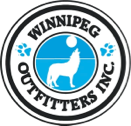In general, the color of the otter hides is as follows: the backbone and sides are light or dark brown, the wishbone, throat, chest and belly are silver in color with a chestnut tint.
Along with the wolverine, it is one of the largest representatives of the family of the fowl. The length of the pelt with the tail can reach 2 m. The tail is very long and is half the length of the torso, which is covered with short fur.
The fur is very thick, short, and almost uniform in height over the entire area of the pelt.
The dorsal hairs are flattened, shiny, and coarse; in general, they have the shape of a plate. This shape of covering hairs, as well as their curvature at the base, is the result of adaptation to a long stay in water.
The coloration of the hairs may vary from light brown to dark brown. The down is also very dense, slightly inferior to the flock in height. The fur on the skull is denser than on the back.
The size of the pelt depends on the age of the animal. To determine it, measure the length from the middle between the eyes on the midline to the base of the tail and the width - we measure it in the middle part of the pelt. The results are multiplied.
Otters, like other semi-aquatic animals, molt once a year. The molt begins in spring and ends in winter.

